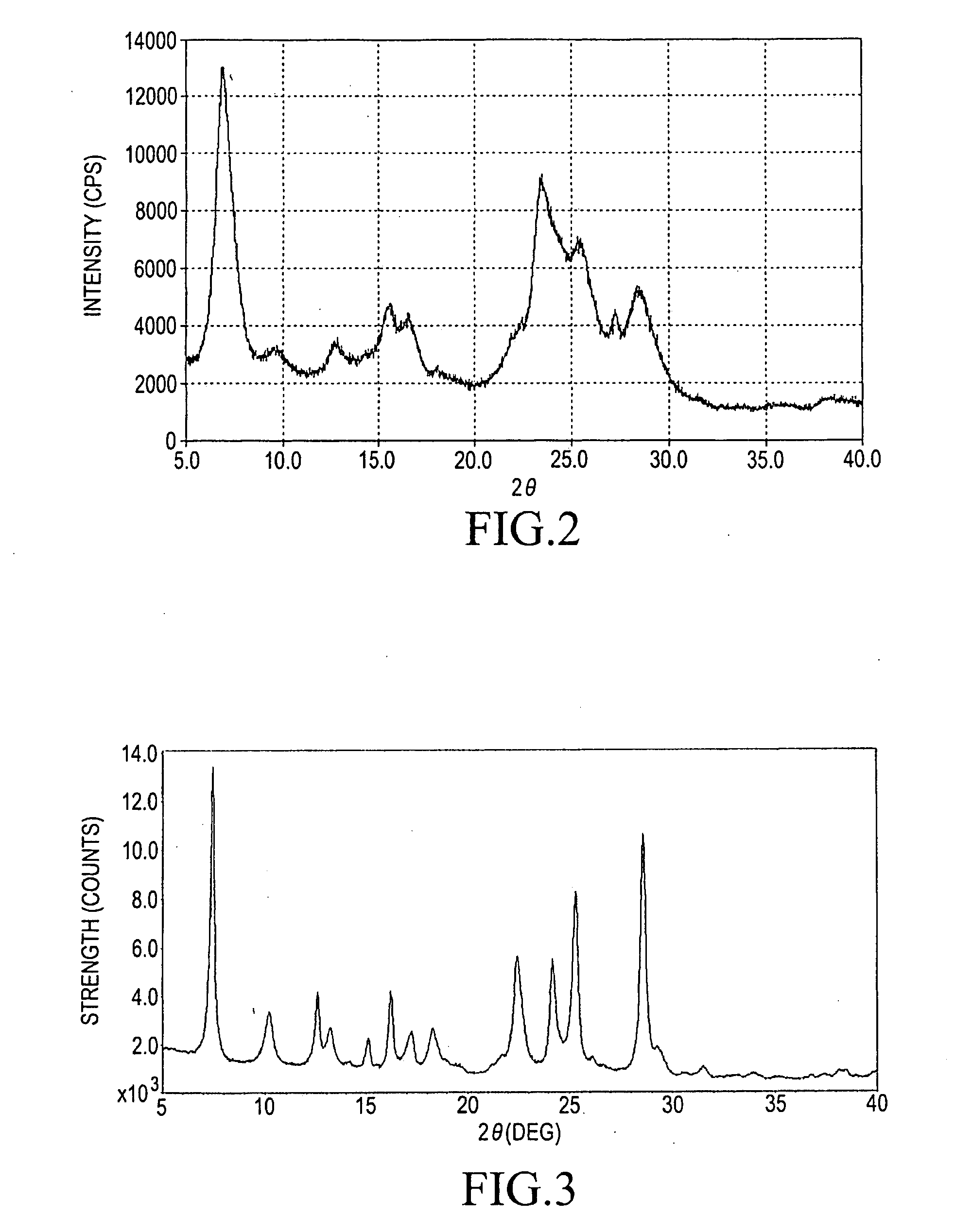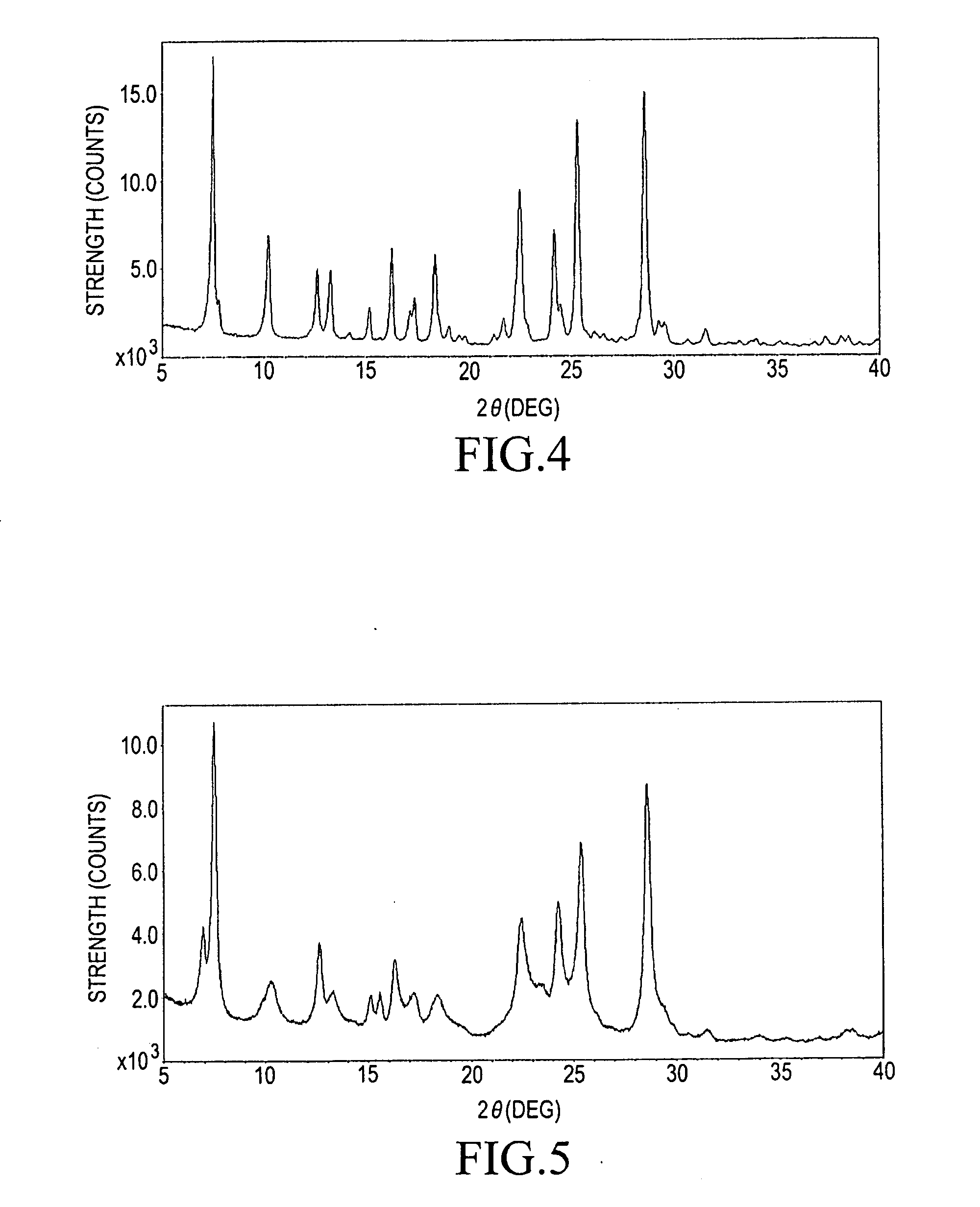METHOD FOR PRODUCING alpha-FORM TITANYLPHTHALOCYANINE AND ELECTROPHOTOGRAPHIC PHOTORECEPTOR COMPRISING alpha-FORM TITANYLPHTHALOCYANINE
- Summary
- Abstract
- Description
- Claims
- Application Information
AI Technical Summary
Benefits of technology
Problems solved by technology
Method used
Image
Examples
example 1
Step (1-A): Preparation of α-Form Titanylphthalocyanine as Starting Material (i.e., Crude Titanylphthalocyanine Having α-Form Polymorph)
[0063]100 g (0.780 mol) of o-phthalonitrile and 1 L of quinoline were charged into a 2 L separable flask. The mixture was stirred under a nitrogen atmosphere. 84.98 g (0.448 mol) of titanium tetrachloride was added to the mixture. Subsequently, the mixture was heated to 180° C. and stirred with heating at the same temperature for 6 hours. After the reaction was completed, the temperature in the system was allowed to be decreased to 150° C., and then the reaction mixture was filtered with heating. Subsequently, 1 L of DMF heated (at 110° C.) was added thereto and the resulting residue was washed.
[0064]The resulting wet cake was added to 640 mL of DMF and dispersed at 130° C. for 2 hours. The dispersion was filtered with heating at 130° C. Subsequently, 1 L of DMF was added thereto and the resulting residue was washed. This routine procedure was repea...
example 2
Step (2-A): Preparation of α-Form Titanylphthalocyanine as Starting Material
[0071]The similar procedures to those described in the above step (1-A) in the Example 1 were employed with the proviso that each material was used in 40 times in its amount to give a blue solid (in producing amount: 2850 g).
Step (2-B): Acid Pasting Treatment
[0072]The similar acid pasting procedures to those described in the above step (1-B) in the Example 1 including the drying and the crushing or sieving procedures were employed with the proviso that each material was used in 40 times in its amount to give a low crystalline titanylphthalocyanine.
Step (2-C): Transformation
[0073]448.0 g of the blue powder of the low crystalline titanylphthalocyanine resulted from the above-described step (2-B), 7.5 L of DMF, and 8.2 L of glass beads each of which has a particle size of 0.5 mmφ were charged into a 20 L enamel tank. The mixture was subjected to dispersing at room temperature (at 25° C.) for 66 hours. The beads...
example 3
[0090]0.2 g of the titanylphthalocyanine crystal prepared in the Example 1; 0.2 g of polyvinylbutyral resin (under a trade name: Esrek BH-3, manufactured by Sekisui Chemical Co., Ltd.); 50 g of 3 mmφ glass beads; and 59.6 g of cyclohexanone were charged into a wide-mouthed bottle, and then subjected to 3 hour milling with a paint shaker to prepare a coating dispersion for forming a photoreceptor layer. This coating dispersion was applied on an aluminum plate by using a bar coater to give a film in a film thickness of 0.5 μm, and then the film was dried in air to form a charge generating layer.
[0091]Subsequently, 4.5 g of p-(N,N′-diphenylamino)benzaldehyde-N′-methyl-N′-phenylhydrazine (under a trade name: CT-501, manufactured by Fuji Photo film Co., Ltd.) as a charge transferring material (CTM); 4.5 g of a polycarbonate resin (under a trade name: Panlight L-1250, manufactured by Teijin Limited); and 51 g of methylene chloride were charged into a wide-mouthed bottle, and then ultrason...
PUM
 Login to View More
Login to View More Abstract
Description
Claims
Application Information
 Login to View More
Login to View More - R&D
- Intellectual Property
- Life Sciences
- Materials
- Tech Scout
- Unparalleled Data Quality
- Higher Quality Content
- 60% Fewer Hallucinations
Browse by: Latest US Patents, China's latest patents, Technical Efficacy Thesaurus, Application Domain, Technology Topic, Popular Technical Reports.
© 2025 PatSnap. All rights reserved.Legal|Privacy policy|Modern Slavery Act Transparency Statement|Sitemap|About US| Contact US: help@patsnap.com



